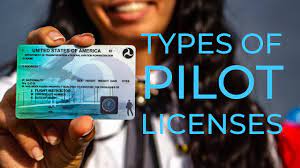
Flying high in the skies, Pilot Commercial License are the modern-day adventurers, navigating vast distances with skill, precision, and a deep understanding of aviation. Their job goes far beyond just steering an aircraft; it involves meticulous planning, constant vigilance, and the ability to make split-second decisions that can mean the difference between life and death. Let’s delve into the world of pilots and explore what makes them the unsung heroes of the sky.
The Role of a Pilot
Pilots are responsible for the safe operation of an aircraft, whether it’s a small private plane or a large commercial jet. Their primary role is to ensure the safety of passengers, crew, and cargo by adhering to strict aviation regulations and procedures. They are also responsible for navigating the aircraft, communicating with air traffic control, and monitoring the aircraft’s systems throughout the flight.
Types of Pilots
There are several types of pilots, each with its own set of responsibilities and qualifications:
- Commercial Pilots: These pilots are trained to fly commercial aircraft, such as airliners and cargo planes. They typically work for airlines and are responsible for transporting passengers and cargo safely and efficiently.
- Private Pilots: Private pilots fly smaller aircraft for personal or recreational purposes. They are not allowed to fly commercially or for hire but can carry passengers and share the cost of the flight with them.
- Military Pilots: Military pilots are trained to fly military aircraft for various purposes, including combat missions, reconnaissance, and transport. They undergo rigorous training and are often among the most skilled and experienced pilots.
Training and Qualifications
Becoming a pilot requires extensive training and a high level of skill. Most commercial pilots undergo training at aviation schools or academies, where they learn the principles of flight, navigation, and aircraft systems. They also undergo simulator training to simulate real-life flying conditions and emergencies.
In addition to training, pilots must also obtain various licenses and certifications, including a private pilot license (PPL), a commercial pilot license (CPL), and an airline transport pilot license (ATPL). They must also pass regular medical exams to ensure they are fit to fly.
Challenges and Rewards
Being a pilot comes with its own set of challenges, including long hours, irregular schedules, and time away from home. Pilots must also be prepared to deal with emergencies, such as engine failures, weather disturbances, and other unforeseen events.